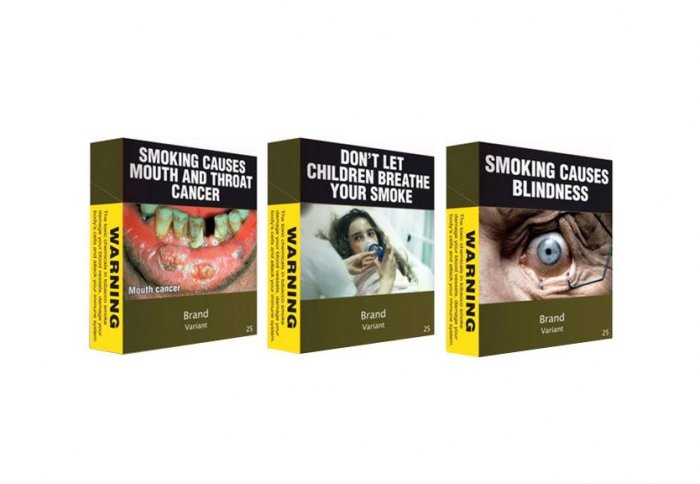
Get ready for plain packaging

To mark World No Tobacco Day Dr Filippos Filippidis looks at how the introduction of plain packaging can help reduce tobacco consumption.
Smoking kills close to 6 million people globally each year, despite decades of tobacco control efforts. It remains the deadliest preventable lifestyle risk factor.
More than a decade ago, the World Health Organization (WHO) Framework Convention on Tobacco Control (FCTC) became the first international treaty negotiated under the auspices of WHO and since then it has been signed by 180 parties, covering the vast majority of the world’s population. FCTC, which is one of the most widely adopted treaties in the history of the United Nations, offers guidance in areas such as restrictions in sales and advertising, smoke-free environments, pricing and taxation et cetera.
Article 13 of the treaty discusses tobacco advertising, promotion and sponsorship, which tobacco companies have extensively used in the past, targeting women and youth in particular. Despite restrictions and bans in tobacco promotion, which are in effect in most high-income countries, the tobacco industry is still trying to glamourise smoking, either through indirect advertising (through movies, for example) or by creating attractive packages that make the product more appealing to potential users.
Even though packaging is often underestimated as a promotional tool, it is well documented that a well-designed cigarette pack can heavily influence the subjective experience of smoking. Therefore, the tobacco industry has heavily invested in the promotional value of packaging, especially in countries where other forms of advertising are prohibited. On the other hand, governments have tried to promote anti-smoking messages through text or pictorial health warnings on cigarette packs.
It was not until late 2012 that a country, Australia, implemented plain packaging.
– Dr Filippos Filippidis
Lecturer in Public Health, Department of Primary Care and Public Health
In response to that, the FCTC states that “parties should consider adopting plain packaging requirements to eliminate the effects of advertising or promotion on packaging. Packaging, individual cigarettes or other tobacco products should carry no advertising or promotion, including design features that make products attractive”. In this context, plain packaging refers to cigarette packs that have no logos, colours, brand images or promotional information other than brand names and product names displayed in a standard colour and font style.
A great body of evidence regarding the potential benefits of plain packaging exists. Plain packs are less attractive to users and are perceived to contain cigarettes of lower quality. Moreover, users spend more time looking at the health warnings on plain packs and are more likely to recall the actual health warnings at a later time. Smokers who use plain packs are also more likely to think about quitting and experience less frequent craving compared to those using branded packs.
However, despite such findings, it was not until late 2012 that a country implemented plain packaging. That country was Australia, which was faced with a fierce reaction from the tobacco industry. After a long legal battle, the plain packaging law was introduced, but the debate regarding the effectiveness of the policy continued, with tobacco companies insisting that it had no effect in the number of smokers in Australia.
Nevertheless, more than three years after the implementation of the policy, studies exploring its effects show that it is working. The proportion of smokers in Australia has declined at an increased rate since 2012, while brand awareness and pack display in outdoors areas have also declined, restricting the potential role of packs in tobacco promotion. Moreover, none of the negative effects predicted by tobacco companies, such as extra burden for retailers, were observed.
Following the success of the Australian law, several European countries have decided to follow. France, Ireland and the United Kingdom are paving the way within the European Union and other countries are also planning to make plain packages compulsory. Experimental studies suggest that the policy can be equally successful in Europe and it has huge potential to effectively influence the prevalence of smoking in the continent, especially among adolescents and young adults. These developments constitute a great victory against the powerful tobacco industry and highlight the importance of sharing good practices between countries.
The WHO heavily supports plain packaging and has made it the central theme of this year’s World No Tobacco day. However, what really determines whether such effective measures will be adopted in each country is the determination of the civil society, the public health community and the elected representatives to make a stand against tobacco industry interference, lobbying and legal action.
Article text (excluding photos or graphics) available under an Attribution-NonCommercial-ShareAlike Creative Commons license.
Photos and graphics subject to third party copyright used with permission or © Imperial College London.
Reporters
Filippos Filippidis
School of Public Health

Contact details
Tel: +44 (0)20 7594 7142
Email: f.filippidis@imperial.ac.uk
Show all stories by this author

Mr Al McCartney
Faculty of Medicine Centre

Contact details
Tel: +44 (0)20 7594 2961
Email: a.mccartney@imperial.ac.uk
Show all stories by this author




Leave a comment
Your comment may be published, displaying your name as you provide it, unless you request otherwise. Your contact details will never be published.